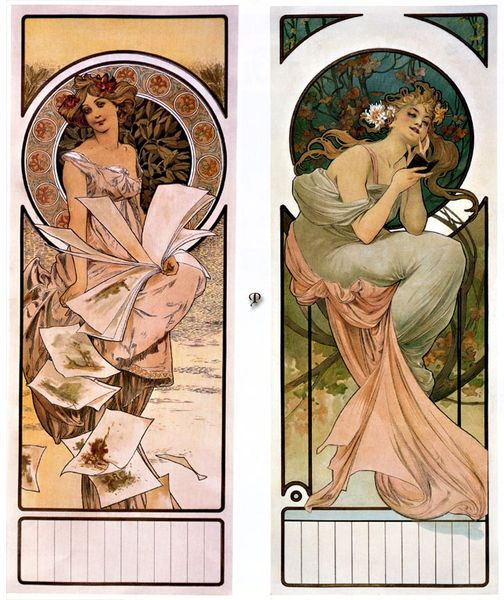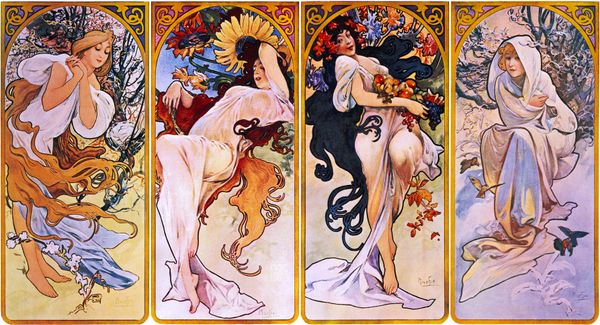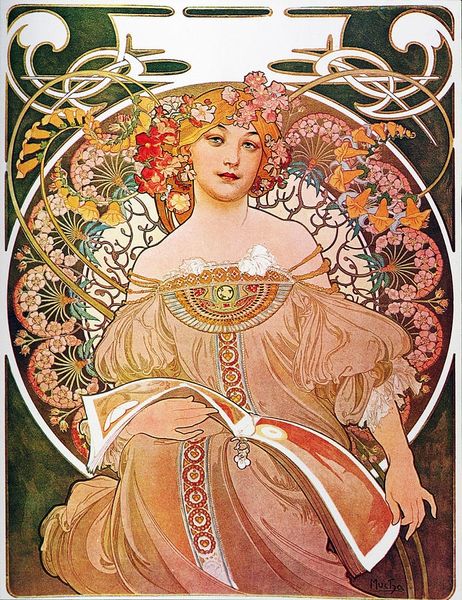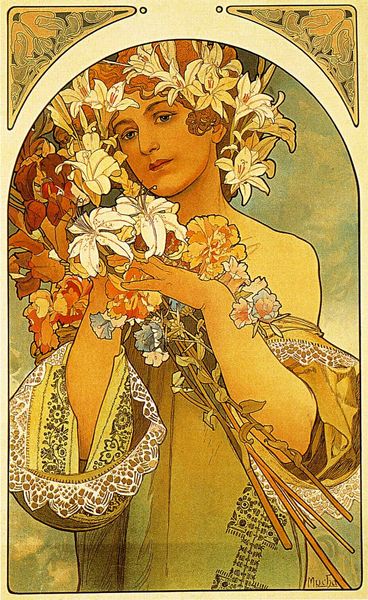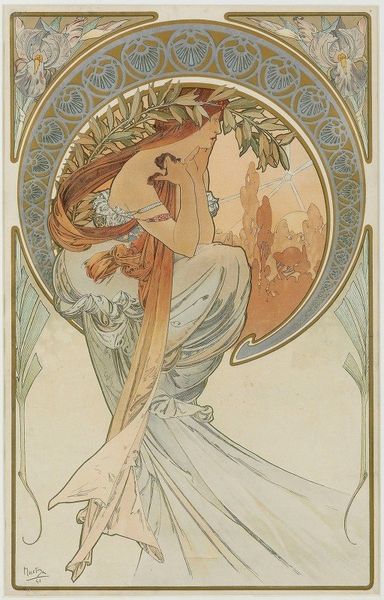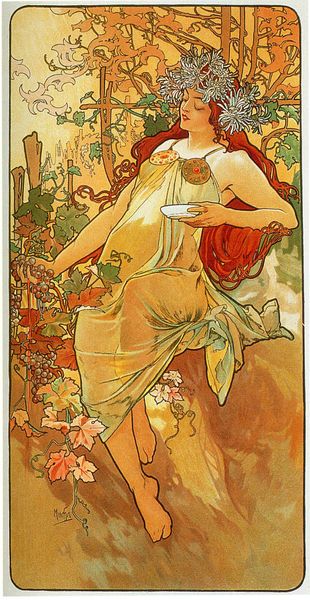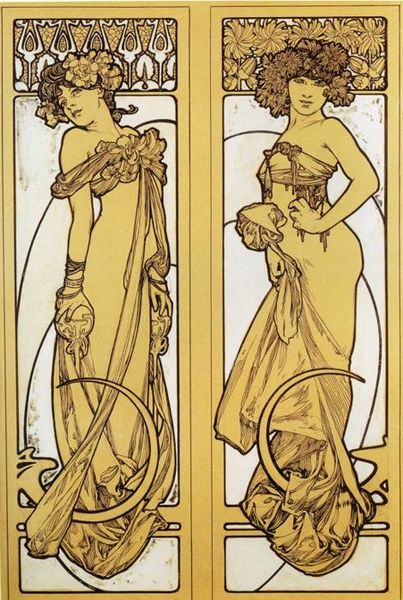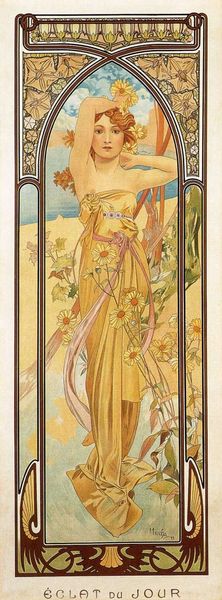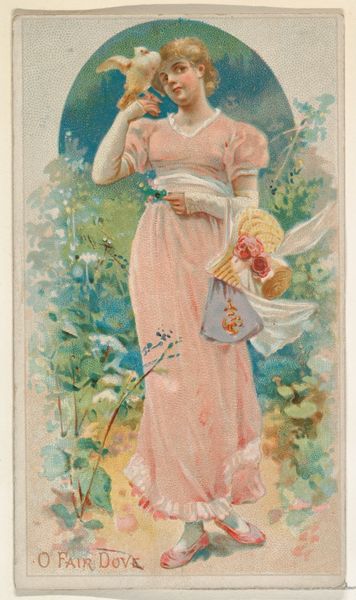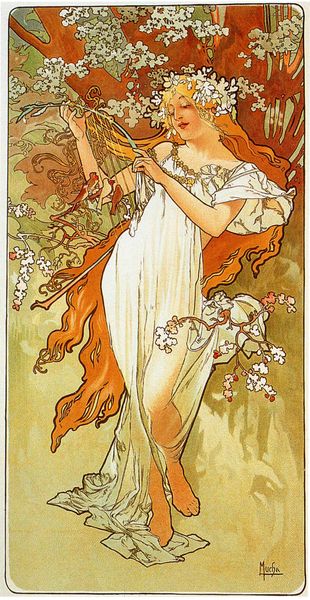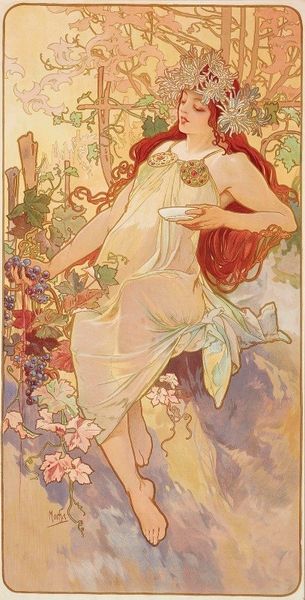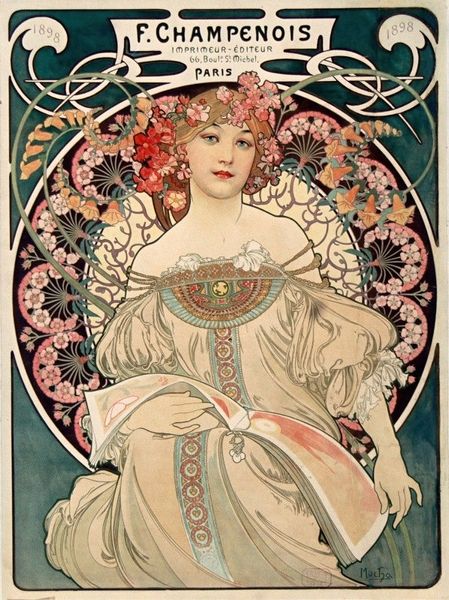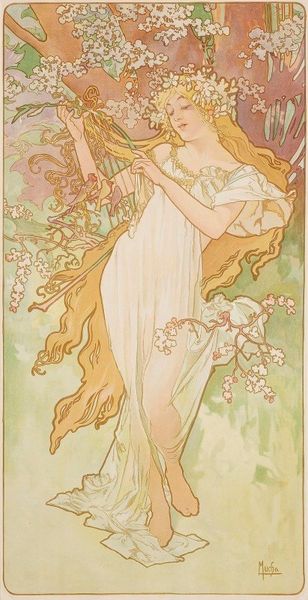
painting
#
portrait
#
art-nouveau
#
painting
#
landscape
#
naive art
#
symbolism
#
art nouveau
Copyright: Public domain
Editor: We're looking at Alphonse Mucha’s "The Seasons (Spring, Summer)," created in 1898. The two paintings feature idealized women, evoking the spirit of their respective seasons. What strikes me is the use of line – all these fluid, flowing curves! What do you make of it? Curator: Indeed, the linear quality is paramount. Observe how line functions here: to delineate form, yes, but also to unify disparate elements. The sinuous lines of the figures’ drapery echo and amplify the botanical motifs. The whole composition breathes through these unbroken, curvilinear gestures, effectively synthesizing human form and nature's rhythm. How do the colours impact the reading? Editor: Well, they’re very muted, aren't they? Lots of pastels... a little washed out, even. They give the images a delicate, almost ethereal quality, linking with the overall idea of seasons, as change in colour and tone, like looking back into history through time-worn memories. Curator: Precisely! The limited palette – predominantly pastel pinks, greens, and blues – contributes significantly to the paintings' harmonic unity. Notice also how the framing devices, too, incorporate motifs reflective of each season. Can you see how these create, formally, a totality, a perfect, unified aesthetic object? Editor: I think I do! It's almost as if the figures, the colours, even the frames are all just different expressions of the same underlying design principles. Thank you for clarifying that, looking closely it almost perfectly reflects Mucha’s interpretation and perspective, making these pieces, and style timeless! Curator: It's been my pleasure, observing and noting these different attributes will add different flavours of engagement within us, enhancing our senses and minds!
Comments
No comments
Be the first to comment and join the conversation on the ultimate creative platform.
